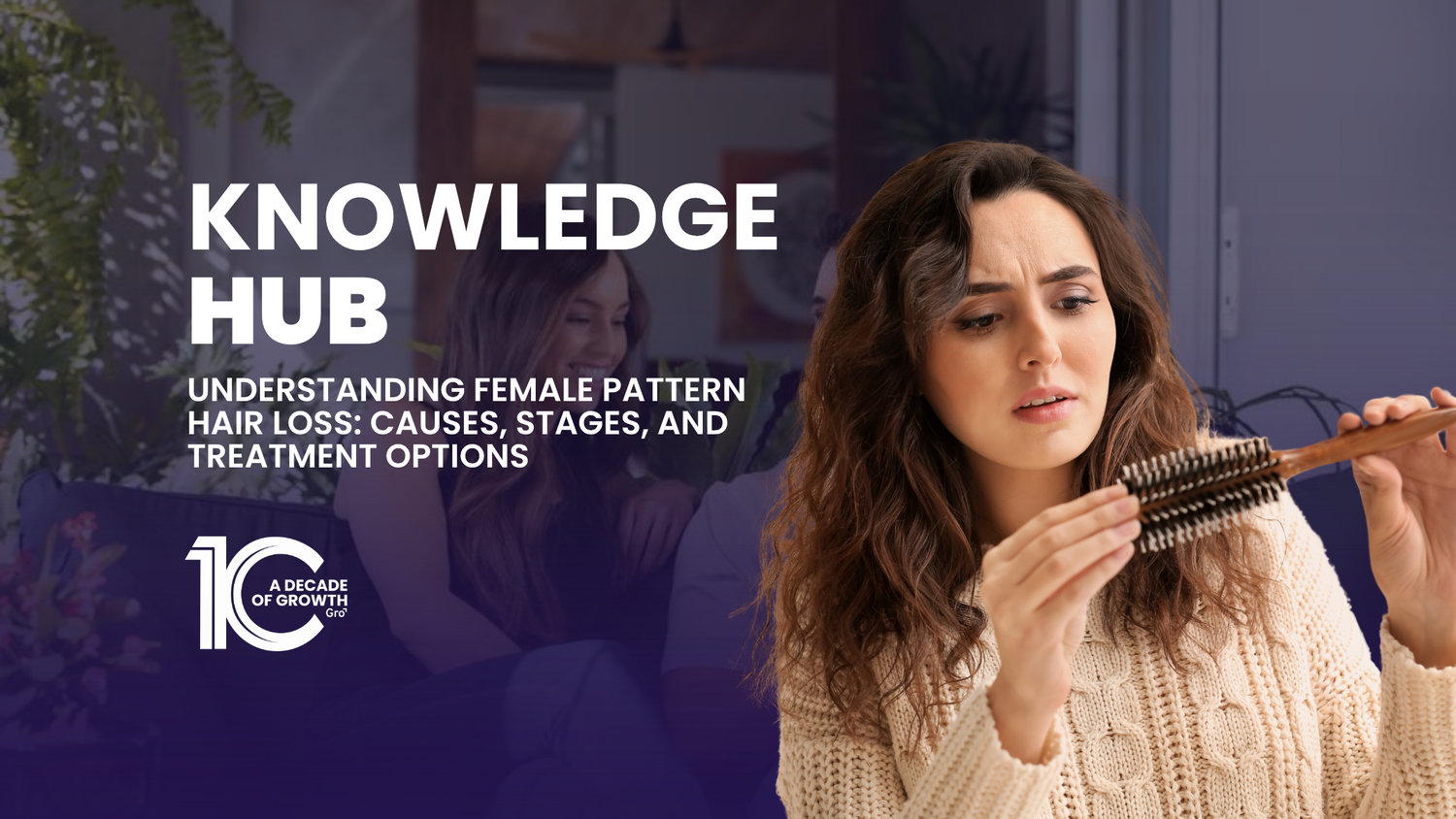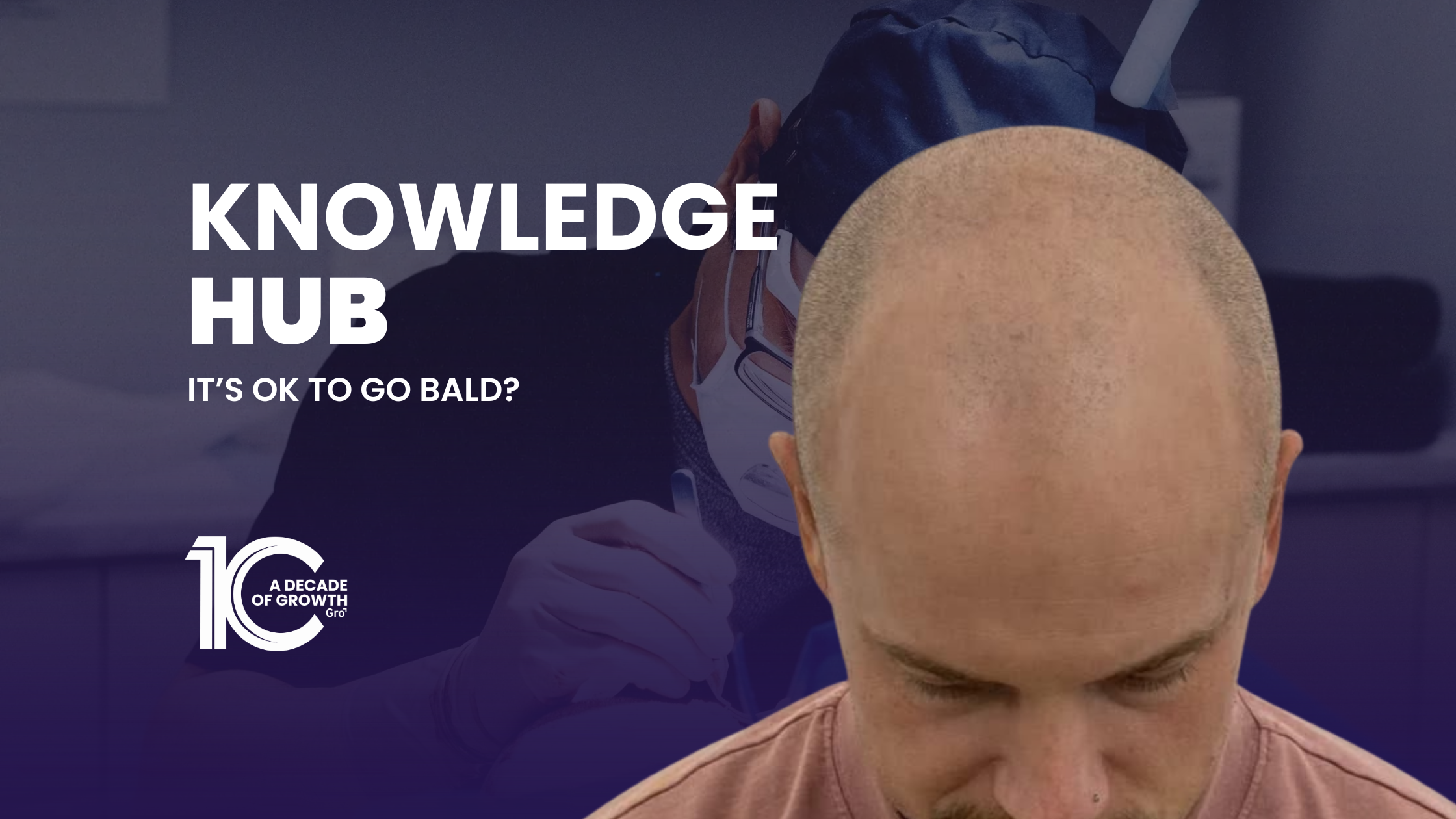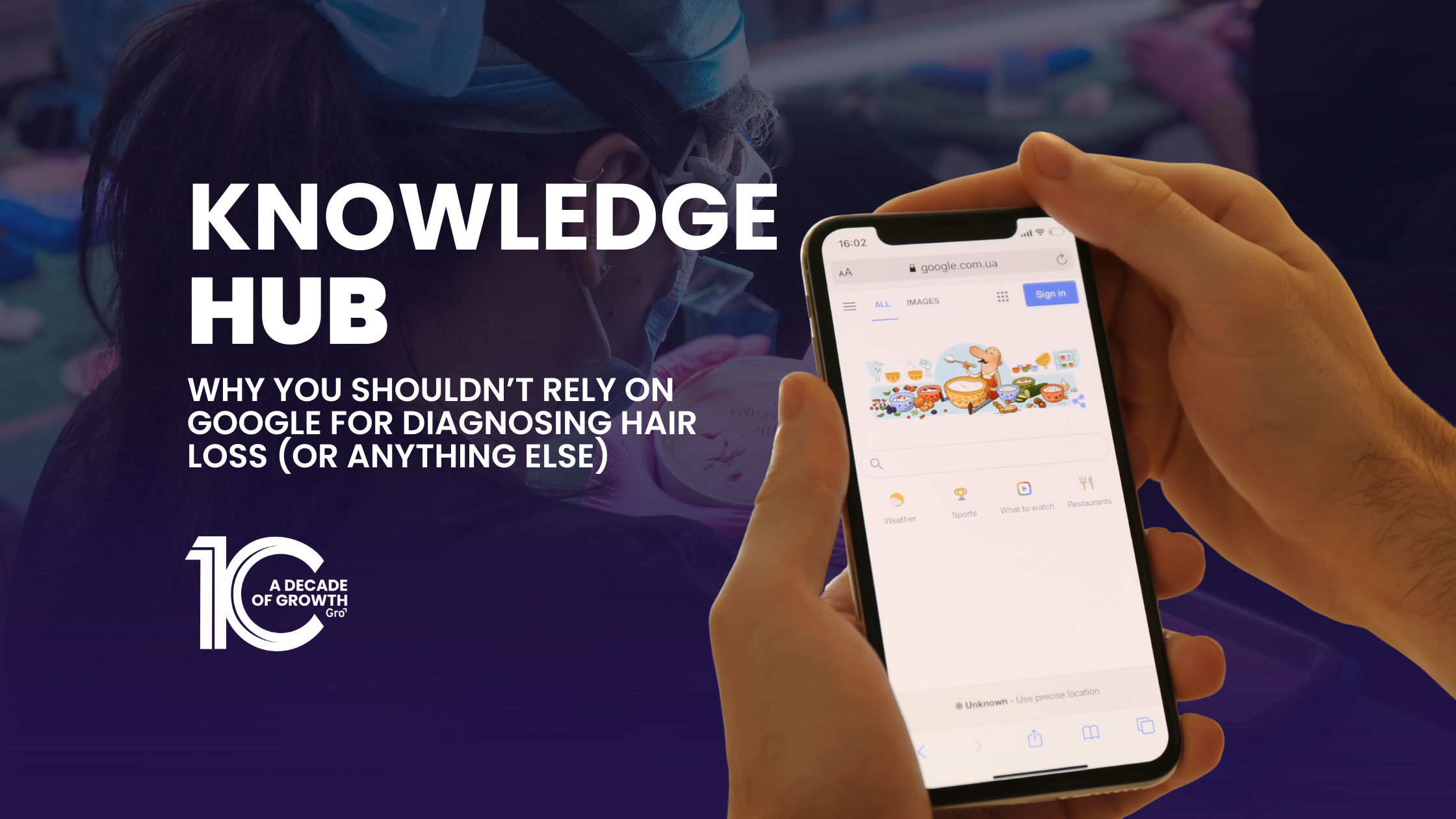Female pattern hair loss (FPHL), also known as androgenetic alopecia, is a progressive form of hair thinning that commonly affects women with increasing age. Unlike male pattern hair loss, which typically begins at the hairline, FPHL usually starts with diffuse thinning at the part line and crown while preserving the frontal hairline. This condition is not uncommon, affecting approximately 30% of women at some point in their lives.
What Causes Female Pattern Hair Loss?
Hair loss in women can result from a range of biological and lifestyle factors. It is important to distinguish between temporary shedding and progressive hair loss like FPHL.
Common causes of temporary shedding (telogen effluvium):
- Hormonal changes (e.g. pregnancy, menopause)
- Significant illness or medical conditions
- Severe emotional or physical stress
- Certain medications and supplements
Contributing factors in female pattern hair loss:
- Genetic predisposition
- Ageing and hormonal changes
- Postmenopausal hormone shifts
Because FPHL is often progressive, early intervention may help manage ongoing thinning. If you're noticing increased hair shedding, consider seeking advice from a Gro Hair Growth Advisor for a private consultation.
Stages of Female Hair Thinning
Female pattern hair loss is typically classified using the Ludwig scale, which outlines three stages:
- Type I: Mild thinning, mostly around the part line
- Type II: Moderate thinning with visible scalp exposure
- Type III: Advanced thinning with a diffuse appearance across the crown
Clinically Supported Hair Loss Treatments for Women
Managing FPHL usually involves a multi-pronged approach, tailored to the individual’s unique situation. Treatment suitability depends on several factors including the stage of loss, overall health, and patient preferences.
1. Prescription Hair Care
Topical or oral prescription options may assist with slowing hair loss or supporting regrowth. These are prescribed following a consultation. You can explore Gro's prescription hair care service here.
2. Growth Factor Therapy
This in-clinic procedure involves using blood-derived growth factors to support hair and scalp health. For more details, visit Growth Factor Therapy at Gro Clinics.
3. Low-Level Light Therapy (LED)
Low-level light therapy may support scalp circulation and cell function. This non-invasive option is offered at select Gro clinics. Learn more here.
4. Hair Transplant Procedures
For some women with stable donor hair, a hair transplant procedure may be an option. At Gro Clinics, our doctors use techniques like Follicular Unit Extraction (FUE) and direct implantation to perform these procedures under local anaesthetic.
5. Nutritional and Lifestyle Support
Hair health is influenced by diet, stress, and overall wellness. Some women benefit from tailored supplementation. While these do not treat FPHL directly, they may support overall scalp and hair condition.
Next Steps: Speak with a Gro Advisor
If you're unsure where to start or which treatment may be suitable, you can book a consultation with a Gro Hair Growth Advisor. All consultations are private and designed to help you explore appropriate options based on your situation.
Find a Gro Clinic Near You:
Disclaimer: This content is for educational purposes only and does not constitute medical advice. Individual results may vary. Before starting or changing any hair loss treatment, speak with a registered health practitioner. Gro Clinics offers consultations with Hair Growth Advisors to help guide your options.












